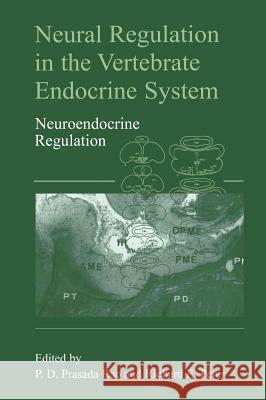Neural Regulation in the Vertebrate Endocrine System: Neuroendocrine Regulation » książka
Neural Regulation in the Vertebrate Endocrine System: Neuroendocrine Regulation
ISBN-13: 9780306461279 / Angielski / Twarda / 1999 / 240 str.
Neural Regulation in the Vertebrate Endocrine System: Neuroendocrine Regulation
ISBN-13: 9780306461279 / Angielski / Twarda / 1999 / 240 str.
(netto: 384,26 VAT: 5%)
Najniższa cena z 30 dni: 385,52 zł
ok. 22 dni roboczych
Bez gwarancji dostawy przed świętami
Darmowa dostawa!
The objective of this book is to provide recent information on neural regulation in the endocrine system in vertebrates. Classical studies have revealed that certain neurons synthesize and release chemical messengers into the vascular system. These neurons are endocrine devices that link the brain with the endocrine glands and other target organs. In vertebrates, the hypothalamus is the seat for chemical coordination and integration of en vironmental and hormonal cues to modulate function of the pituitary gland, and conse quently, the functions of other endocrine glands. Exciting information generated during the past few decades has resulted in profound alterations in the conceptual fabric of endo crinology. From the wealth of information that emerged on neuropeptides of the central nervous system, and on the other connectivities of various brain centers, its has become clear that several extra-hypothalamic sites are also involved in regulation of hypophysial hormones. The brain has assumed a greater importance in the regulation of the endocrine sys tem. However, recent studies have revealed varying degrees of functional autonomy in hy pophysial hormone secretion, which may be due to intrapituitary cytokines. Although gonadotropin-releasing hormone (GnRH) is a key regulator of gonadotropin secretion, there exists a GnRH receptor diversity in vertebrates such as the receptor presence in can cer cells. Recent studies have demonstrated the multifactorial nature of the neuroendo crine factors involved in growth hormone regulation in fish. On the other hand, in birds, thyrotropin-releasing hormone plays a major role in growth hormone release.











